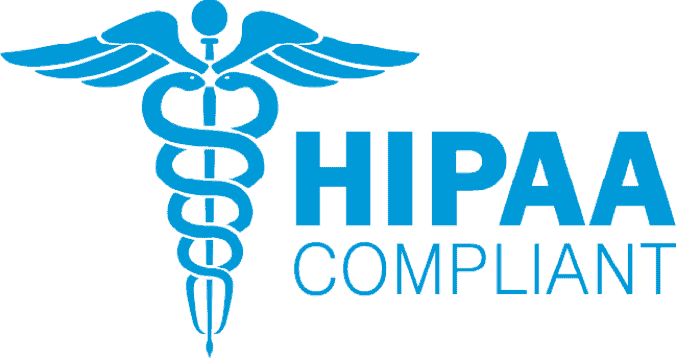Get Your New York Medical Marijuana Card in New York Now! - $149
Easy online process. No appointment is needed. Not Billed Unless Approved.
In New York, the approach to medical marijuana has evolved, making access easier than ever. Patients no longer require a traditional New York medical marijuana card; instead, they can secure an MMJ certification online. Our service streamlines the process, offering a fast and straightforward way to obtain your medical marijuana certification in New York.
Renewal Patients
Renew Your MMJ Certification And Continue Using Medical Marijuana For Your Health Benefits
The #1 MMJ Card Platform in the New York










How To Get A Medical Marijuanas Card In NY
As of March 20, 2023, New York State has updated its medical marijuana program. The key change is that New York Medical Marijuana Cards are no longer required. Instead, patients now need a certification from a registered healthcare provider. This shift aims to simplify the process and make access to medical marijuana more straightforward without Medical Marijuana Card In New York.
Step 1: Get Certified
- Consult a Healthcare Provider: Contact a healthcare provider registered with New York’s Medical Cannabis Program. Discuss whether medical cannabis is appropriate for your condition.
- Receive Certification: If your healthcare provider determines that medical cannabis is suitable for your condition, they will issue a certification. This certification now acts as your access pass to medical marijuana, replacing the traditional medical cannabis card in New York.
Step 2: Purchase Medical Cannabis
- Visit a Dispensary: With your MMJ certification, visit a registered medical cannabis dispensing facility in New York State.
- Provide Identification: Present your MMJ certification and a government-issued photo ID at the dispensary to purchase medical marijuana products in state of New York.
Important Notes
- Automatic Registration: Upon certification, patient don’t need to register with the state separately, now patients are automatically registered in the Medical Cannabis Data Management System (MCDMS), and the certification includes their Registry ID.
- Updating Information: Patients certified after March 20, 2023, must inform their certifying practitioner of any name or address changes within ten business days to receive updated documentation.
- For Earlier Patients: Those certified before this date must notify the Medical Cannabis Program of any changes.
Learn More: https://cannabis.ny.gov/patients
Our Procedures
At Medical Marijuana Card NY, we strive to provide you with a straightforward and efficient process for obtaining your NY medical cannabis certification. Our platform offers a seamless and secure process that ensures your convenience and privacy.

Book an Appointment
You do not need to arrange an appointment! Simply create an account! answer a few questions, and you’ll be connected with certified MMJ Physician in New York within minutes.

Consult With An MMJ Doctor
During the consultation, the MMJ doctor will discuss your medical condition and receive approval for an MMJ certification.

Obtain Your MMJ Certification
After receiving approval from the MMJ doctor, your MMJ Certification will be sent to you via email within 24-48 hours. With your MMJ Certification in hand, you can visit legal New York dispensaries and buy medical cannabis products.
About Us: Medical Marijuana Card NY
Medical Marijuana Card NY stands as a premier online service, dedicated to connecting patients with certified New York medical cannabis doctors. In the heart of our mission is the commitment to facilitate the process of obtaining and renewing medical marijuana certifications, aligning with state of New York’s latest regulations. Our platform is designed for ease and accessibility, ensuring that every patient can navigate the certification process smoothly and with confidence.
At Medical Marijuana Card NY, we boast a team of medical practitioners certified by the New York Department of Health, signifying our unwavering dedication to compliance and patient welfare. These professionals provide thorough evaluations to determine eligibility under the new state law, prioritizing your health above all.
We understand the complexities involved in the medical marijuana certification landscape. That’s why our service simplifies this journey, offering a streamlined pathway that respects your time and needs. Whether you’re seeking a new certification or renewing an existing one, we’re here to support you every step of the way.
Our commitment to adaptability and patient care sets us apart. We continuously update our practices to reflect New York’s evolving legal framework, ensuring you receive the most current and comprehensive guidance. Trust in Medical Marijuana Card NY to be your guide in obtaining and maintaining your medical marijuana certification with integrity and professionalism.

Discover What Our Patients Say
How to Become a Medical Marijuana Patient in New York
Becoming a medical marijuana patient in New York has evolved significantly, reflecting the state’s commitment to accessible and compassionate healthcare. With the latest regulations as of March 2023, the process is streamlined, focusing on a certification approach rather than the traditional medical marijuana card system. This adjustment ensures that patients receive timely access to the care they need, bypassing the complexities of the previous system.
Qualifying Condition for Medical Card in NY
Initially, the journey to becoming a medical marijuana patient in New York starts with understanding the qualifying conditions. Unlike many states that have a predefined list of qualifying medical conditions for medical marijuana use, New York has adopted a more patient-centric approach. As of 2022, the state no longer specifies qualifying conditions.
Instead, certified medical marijuana doctors are empowered to evaluate patients on a case-by-case basis. This allows doctors to determine the appropriateness of medical marijuana for a patient’s specific situation, ensuring a personalized and comprehensive approach to healthcare.
Apply New York Medical Marijuana Card Online
The transition from requiring a New York medical marijuana card to needing a medical marijuana certification has streamlined the application process. Patients seeking medical marijuana treatment no longer have to navigate the cumbersome process of obtaining a card; instead, they need to secure a certification from a qualified doctor.
Consultation with a Qualified Doctor: The first step in the process is consulting with a doctor registered with the New York Department of Health’s Medical Marijuana Program. During this consultation, the doctor will evaluate your health condition and discuss the potential benefits and risks of medical marijuana treatment.
Receiving Your Certification: If the doctor determines that medical marijuana is suitable for your condition, you will be issued a certification. This certification includes a registration ID number, which is crucial for the next steps.
Automatic Registration: Upon receiving your certification, you are automatically registered with the New York State Medical Marijuana Program. The registration ID number provided in your certification allows you to purchase medical marijuana products from authorized dispensaries across the state.
Visiting Dispensaries: With your medical cannabis certification and a valid form of identification that confirms you are a resident of New York State, you are eligible to visit any state-authorized dispensary to get medical marijuana products. The dispensary staff will verify both your certification and your New York residency through your registration ID before any purchase is made.
This streamlined process not only simplifies access to medical marijuana for patients in need but also aligns with New York’s progressive stance on marijuana use. By eliminating the need for a physical card and instead focusing on a direct certification system, New York ensures that patients can quickly and easily access their treatments without undue delay.
The Benefits of having A Medical Cannabis Certification in New York
Having a medical cannabis certification in New York provides several benefits, even with the legalization of recreational marijuana. Here are some of the key advantages:
Access to Medical Marijuana: Certification allows legal access to medical marijuana, which can be critical for individuals suffering from debilitating conditions that may benefit from cannabis treatment.
Higher Possession Limits: Medical cannabis patients in New York can legally possess up to a 60-day supply of medical marijuana, which is more than the limit for recreational users. This higher possession limit means fewer trips to the dispensary, providing convenience and uninterrupted access to medication.
Age Accessibility: In New York, individuals as young as 18 can obtain a medical cannabis certification. This is particularly important for younger patients who may not be eligible for recreational marijuana but can benefit from the therapeutic properties of medical cannabis.
Cost Considerations: While patients do not pay for the healthcare certifications for marijuana, consultation charges apply when visiting healthcare providers to obtain their medical marijuana certifications. These fees vary, but having a medical cannabis certification may lead to cost savings in the long run due to lower taxes and possible discounts on medical cannabis products compared to recreational products.
Home Cultivation: Registered medical marijuana patients aged 21 or older may grow marijuana at home for medical use, and designated caregivers can also grow plants on behalf of their patients, under specific regulations.
100% Money-Back Guarantee
In Case You're Not Approved
We offer a 100% Money Back Guarantee, If in case you’re not Approved

Meet Medical Marijuana Doctor Online in New York
In New York, the integration of telemedicine with the Medical Marijuana (MMJ) program has significantly enhanced the accessibility and convenience of obtaining medical cannabis evaluations. This modern approach allows patients to engage with licensed New York medical marijuana doctor remotely, offering a seamless experience right from their homes. The system is meticulously designed to prioritize patient privacy while providing straightforward access to medical marijuana in the state.
The process starts when patients schedule an online appointment with a certified MMJ doctor. These sessions are conducted through secure video conferencing tools, ensuring both confidentiality and compliance with HIPAA regulations. During the virtual consultation, the doctor thoroughly reviews the patient’s medical history, discusses their current symptoms, and assesses the appropriateness of medical marijuana as a treatment option.
Key Advantages of Online MMJ Consultations:
- Enhanced Accessibility: This service is particularly beneficial for patients who face mobility challenges or reside in remote areas, far from medical centers.
- Time-Saving Convenience: Online consultations eliminate the need for travel, significantly reducing the time spent in transit and waiting for appointments.
- Upholding Privacy and Comfort: The virtual format ensures a comfortable and private environment for patients, fostering open and honest communication with their healthcare provider.
During 420 Evaluations In New York
During a 420 evaluations in New York, expect a thorough review of your medical history and a discussion about your current health issues with a licensed healthcare provider. The evaluation is aimed at determining whether you qualify for medical marijuana use under state law. You will likely discuss your symptoms, treatment history, and how cannabis might benefit your condition. The provider will also inform you about the legal aspects of using medical marijuana in New York, including permissible forms and quantities. This process is typically confidential and focused on ensuring your treatment aligns with medical guidelines and personal health needs.
How to Become a Medical Marijuana Caregiver in New York
To register as a medical marijuana caregiver in New York, follow these steps:
Eligibility Requirements:
- Be at least 21 years old (unless special permission is obtained from the Department of Health).
- Be a New York State resident with a valid state-issued driver’s license or ID card.
- You cannot be the certifying physician for the patient you are designated to care for.
Designation by Patient:
- To start the process, a patient registered under the MMP must designate you as their caregiver during their registration process. This can be done by the patient or another appropriate person if the patient is a minor or incapable of consent.
Completing Your Registration:
- Once the patient’s registration is approved, you can start your registration.
- Create a personal account on MY.NY.gov.
- Log in, select “Health Applications,” then “Medical Cannabis Data Management System (MCDMS).”
- Click “Start New Registration” and follow the prompts to complete your caregiver registration.
How to Renew Your New York Medical Marijuana Certification
Renewing a medical marijuana certification in New York involves a straightforward process. Here’s a concise guide:
Consultation with a Healthcare Provider:
Schedule an appointment with a registered healthcare provider licensed in New York State. This can be the same provider who issued your initial certification or a new one.
Eligibility Reassessment:
During the appointment, the provider will reassess your condition to determine if you continue to qualify for medical marijuana use.
Renewal Certification:
If you still qualify, the healthcare provider will issue a new certification. This certification will include a unique patient ID and is valid for one year, with some exceptions for terminally ill patients.
Online Renewal:
Renew certification or extend your certification online, especially if you are consulting your healthcare provider via telemedicine.
Certification Cost:
While the certification itself is free, consultation fees with the healthcare provider are applicable and vary.
Registry ID Card:
As of March 20, 2023, New York State no longer issues medical marijuana cards. The certification from your healthcare provider, which includes your unique patient ID, is sufficient.
New York Medical Marijuana Program
New York State medical cannabis laws ensure that only valid New York residents with qualifying conditions can access cannabis for therapeutic purposes, making it legal in New York for them to use cannabis as prescribed. The state’s medical cannabis program is designed to support patient needs while ensuring the safe use of cannabis in New York State.
The New York Medical Marijuana Program has undergone significant changes, markedly improving patient access and experience. A pivotal moment was on March 31, 2021, with the enactment of the Marijuana Regulation and Taxation Act (MRTA), which legalized recreational marijuana and indirectly expanded the medical marijuana landscape.
Following this, on January 24, 2022, the program underwent a crucial change: the removal of specific illness requirements for medical cannabis prescription. This allowed doctors the flexibility to prescribe cannabis for any condition they deemed would benefit from its use, significantly widening the potential patient base.
In a further step towards simplification, March 2023 saw the replacement of physical New York medical cannabis cards with an automatic registration process linked to MMJ certification. This change streamlined the process, making it easier and more efficient for eligible patients to access medical marijuana. These progressive steps reflect New York’s commitment to enhancing the efficacy and accessibility of medical marijuana, aligning with a broader trend of liberalizing cannabis laws across the United States.
Things to Do in New York
Exploring New York offers an array of unforgettable experiences, from the architectural grandeur of the Empire State Building to the scenic beauty of the Hudson River and Adirondack Park. Immerse yourself in the financial heartbeat of the world with a visit to Wall Street, or experience the cultural splendor of Broadway shows that bring the vibrant arts scene to life. For those seeking intellectual stimulation, the prestigious campuses of Cornell University and Columbia University are beacons of innovation and education. And no trip to New York is complete without witnessing the awe-inspiring Niagara Falls, a natural wonder that draws visitors from around the globe.
Cities We Serve
Why Choose Us
Experienced Professionals
Our team at Medical Marijuana Card NY consists of highly qualified and certified medical marijuana doctors. With their extensive experience, they provide expert evaluations and advice, ensuring that your treatment aligns with the latest medical standards and practices.
Comprehensive Telemedicine Platform
Our telemedicine platform is secure video consultations, you can discuss your medical condition, symptoms, and treatment options with our knowledgeable doctors from the comfort and privacy of your own home.
Easy Online Process
Our platform simplifies the certification process. With user-friendly online forms and procedures, obtaining your medical marijuana certification is efficient and hassle-free, saving you time and effort.
Confidential Consultations
We understand the importance of privacy. Our consultations are conducted with the utmost confidentiality, ensuring that your personal and medical information is securely handled and protected.
Comprehensive Care
At Medical Marijuana Card NY, each patient receives a thorough evaluation tailored to their specific medical needs. Our doctors take the time to understand your condition and recommend the best course of treatment.
Seamless Experience
Our platform is designed for ease of use, ensuring a smooth experience from start to finish. From scheduling appointments to receiving your certification, every step is streamlined for your convenience.
Ongoing Support
We offer continuous support throughout the certification process and beyond. Whether you're a new applicant or looking to renew your certification, our team is here to assist you every step of the way.
Instant Renewal
Medical Marijuana Card NY offers an instant renewal service for your medical marijuana certification. This efficient process is designed for those who already have a certification and need a quick update.
Frequently Asked Questions
Is weed legal in New York?
Yes, recreational marijuana use and possession became legal in New York as of March 31, 2021. Adults 21 years and older are allowed to possess and use marijuana within the state’s legal limits.
Do we still need medical marijuana card in new york?
As of the latest update in March 2023, in New York, you no longer need a traditional medical marijuana card. Instead, patients require a medical marijuana certification from a qualified healthcare provider. Once a patient receives this certification, they are automatically registered with the New York State Medical Marijuana Program and given a registration ID number. This number can be used to purchase medical marijuana products from registered dispensaries.
For recreational use, adults aged 21 and over do not need a medical marijuana certification or card to purchase marijuana legally from licensed recreational dispensaries.
How to qualify for medical marijuana in NY?
Qualification depends on an evaluation by a healthcare provider registered with the New York State Medical Marijuana Program. Medical Marijuana Card NY can help connect you with a qualified provider who will assess if medical marijuana is suitable for you.
How old do you have to be to get a medical marijuana certification in NY?
Individuals must be at least 18 years old to qualify for a medical marijuana certification. Those under 18 may still access medical marijuana through a designated caregiver.
How much is a medical marijuana certification in NY?
The cost associated with obtaining a medical marijuana certification varies by healthcare provider. This includes the consultation fee, which is not standardized and may differ from one provider to another.
How do I get a medical marijuana certification in NY?
To obtain a certification, you’ll need to be evaluated by a registered healthcare provider. Medical Marijuana Card NY can facilitate this process by helping you schedule an appointment with a provider who is experienced in evaluating patients for medical marijuana use.
How to apply for a medical marijuana certification in NY?
The application process for a medical marijuana certification involves finding a registered healthcare provider who can evaluate your medical condition. Following the evaluation, if the provider decides you could benefit from medical marijuana, they will issue a certification and complete the registration process with the state on your behalf.
How long does it take to get a medical marijuana certification in NY?
The timeline can vary depending on the provider’s availability and the evaluation process. Medical Marijuana Card NY can often help expedite the process by connecting you with providers who offer timely evaluations.
Do I need a medical card to buy at a dispensary in New York?
For recreational use, adults 21 and older do not need a medical card to purchase marijuana at dispensaries that are licensed to sell it recreationally. For medical use, a medical marijuana certification and registration ID number from a doctor are required.
How to renew medical certification online in New York?
You will need to consult with your healthcare provider for the renewal of your medical marijuana certification. The process may vary by provider, but often it can be done through telehealth services.
Does New York accept out-of-state medical cards?
Currently, New York does not accept out-of-state medical marijuana cards or certifications for making purchases within the state.
